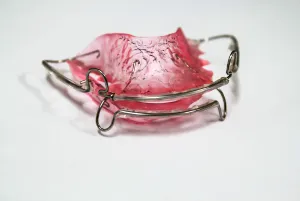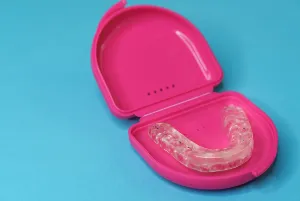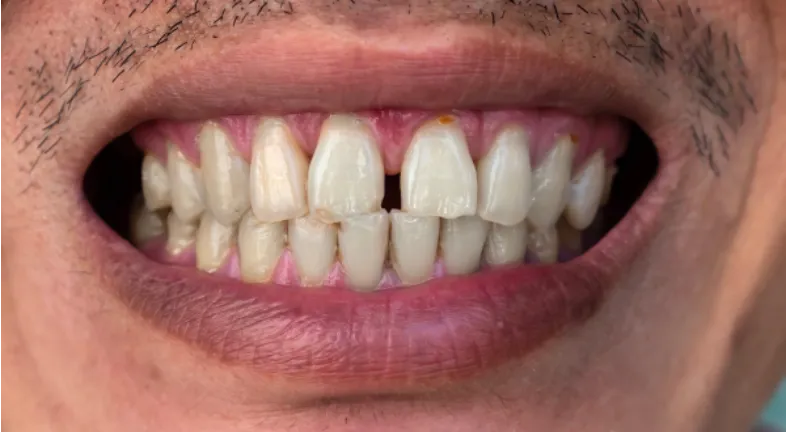
Retainers play a crucial role in teeth straightening by helping maintain the alignment of your teeth after braces or clear aligners. However, there are times when a retainer might feel tighter than usual, which can lead to discomfort or concern. If you're experiencing this issue, it’s important to understand why this happens and what steps you can take to alleviate it. In this article, we will explore the reasons behind retainer tightness, what to do when it occurs, and tips for proper retainer care.
Retainers are devices that help stabilize the teeth after the completion of orthodontic treatments such as braces or clear aligners. They work by applying gentle pressure to your teeth, keeping them in their corrected positions and preventing them from shifting back to their original alignment. While retainers are generally comfortable, there may be times when they feel tighter than usual. Understanding the function and common causes of retainer tightness will help you address the issue effectively.

There are two main types of retainers that orthodontists use to help maintain the alignment of the teeth:
Both types of retainers serve the same purpose, but their design and fit can affect how they feel in your mouth, especially when they start to tighten.
It is not uncommon for a retainer to feel tight at times. Several factors can cause this sensation, but most of the time, it is a sign that the retainer is doing its job. Here are some common reasons why your retainer may feel tighter than usual.
After you finish your orthodontic treatment, your teeth might still be in the process of settling into their new positions. If you miss wearing your retainer for an extended period, your teeth may shift slightly, and when you put the retainer back on, it will feel tighter. This is because the retainer is applying pressure to realign your teeth. If this happens, it’s important to wear the retainer consistently to allow your teeth to settle properly.
If you haven’t been following your orthodontist’s instructions for how often you should wear your retainer, this can lead to tightness when you do wear it again. Not wearing your retainer for the recommended amount of time can cause your teeth to move, and when you put it back in, it may feel tight as it works to correct that movement.
As time passes, the retainer can change shape due to wear and tear, or the shape of your teeth may change slightly as well. If the fit becomes too tight, it may be a sign that your retainer is no longer fitting properly. A tight fit can also occur if the retainer was initially made too small or has warped over time.

If your retainer is tightening and causing discomfort, here are some steps you can take to address the issue:
First, check to ensure that your retainer is properly positioned. If it feels too tight, it could be a sign that it is not fitting properly or that your teeth have shifted slightly. If it’s a removable retainer, take it out and check for any visible cracks or warping. If you notice any issues, contact your orthodontist to get the retainer checked or adjusted.
If your retainer is tight because your teeth have shifted, wearing it regularly will help realign your teeth over time. Make sure you follow your orthodontist’s instructions about how often to wear the retainer, especially during the first few months after your treatment. If your retainer is a night retainer, wear it every night until your orthodontist advises otherwise.
If your retainer is removable and feels tight, you can soak it in warm (not hot) water for a few minutes. This can help make the plastic more flexible and easier to insert. However, do not use hot water, as this can distort the shape of the retainer and make it unusable.
In some cases, tightness may indicate a problem with the retainer, such as warping or damage. If the retainer feels excessively tight, causes pain, or doesn’t fit properly, it’s time to schedule a visit with your orthodontist. They can assess the fit of the retainer and may need to take impressions of your teeth to create a new one.
If the tightness causes significant discomfort or pain, this may be a sign that your teeth are shifting too much and your retainer is unable to accommodate the changes. An orthodontist may need to adjust your treatment plan or provide a new retainer that fits better.
Sometimes, when a retainer feels tight, it could also signal that your treatment plan needs to be re-evaluated. Your orthodontist may need to reassess your teeth’s position or suggest additional treatments to ensure that your smile remains straight and aligned.

Proper maintenance and care of your retainer are essential to ensure that it stays in good condition and continues to work effectively. A well-maintained retainer not only helps prevent discomfort but also ensures that your teeth stay aligned throughout the long term. Here are some tips to properly care for your retainer, minimize tightness, and extend its lifespan.
One of the best ways to maintain the fit of your retainer and prevent it from becoming too tight is by cleaning it regularly. Bacteria, plaque, and food particles can build up on your retainer, leading to odor and discomfort. To clean your retainer, use a soft toothbrush and mild soap or a gentle retainer cleaner. Avoid using toothpaste, as it can scratch the surface of the retainer and cause damage over time.
You can also soak your retainer in a cleaning solution specifically designed for orthodontic appliances. Make sure to rinse it thoroughly after cleaning to avoid any residue. If you’re using a plastic retainer, it’s important to avoid harsh chemicals or hot water, as they can cause the plastic to warp, leading to a poor fit.
When you’re not wearing your retainer, always store it in a protective case. This helps prevent accidental damage, such as cracks, bending, or warping, that could make it tighter or less effective. A retainer case is designed to keep your retainer safe from dust, dirt, and potential impact when not in use.
Never leave your retainer exposed to direct sunlight or in hot environments, as extreme temperatures can alter its shape. For example, leaving your retainer in a hot car or near a heat source could cause the plastic to warp, making it fit tightly and potentially causing discomfort.
To preserve the fit of your retainer, avoid eating or drinking anything other than water while wearing it. Eating with your retainer can cause food particles to become trapped, which could cause an unpleasant odor or plaque buildup. Additionally, sugary drinks like soda or juice can cause staining or damage to the retainer.
If you need to eat, remove the retainer, rinse it with water, and store it in its case. After eating, clean the retainer thoroughly before putting it back in your mouth. This not only helps maintain the retainer’s cleanliness but also ensures that your teeth stay properly aligned.
The length of time you need to wear your retainer depends on your individual treatment plan and the guidance of your orthodontist. Generally, orthodontists recommend wearing a retainer full-time for several months to a year after your treatment is completed, and then transitioning to night wear as your teeth settle into their final positions.
In the immediate months after your braces or aligners are removed, your orthodontist will likely recommend wearing your retainer full-time, which means wearing it for at least 20-22 hours a day, except when eating or drinking. During this time, your teeth are still adjusting to their new positions, and wearing your retainer consistently will prevent them from shifting back to their original positions.
Once your orthodontist determines that your teeth have stabilized, they will likely recommend transitioning to nighttime wear only. This typically occurs after several months of full-time retainer use. Wearing the retainer overnight helps maintain the alignment of your teeth while allowing you to live your day without the need to wear it constantly.
Even after your treatment is complete, it’s important to continue wearing your retainer as instructed. In some cases, wearing a retainer every night for life may be recommended to maintain your results, especially if your teeth have a tendency to shift over time.

If you notice that your retainer no longer fits comfortably or if it feels too tight, don’t panic. Here are the steps you should follow to resolve the issue:
If your retainer feels uncomfortably tight or if it doesn’t fit properly, schedule an appointment with your orthodontist. They will be able to assess the fit of your retainer and determine whether it needs to be adjusted. In some cases, the retainer may have become warped or damaged, and a new one may need to be created to ensure your teeth remain properly aligned.
Over time, retainers can wear down or become damaged. If your retainer appears to be cracked, warped or has visible signs of wear, it may no longer be able to do its job properly. If your retainer doesn’t fit well, it could lead to discomfort and might cause your teeth to shift. If this happens, don’t wait to get a new retainer; address the issue with your orthodontist as soon as possible to avoid any problems with tooth alignment.
While it can be tempting to force a tight retainer into place, this could cause further damage to the appliance or your teeth. If your retainer feels too tight, stop trying to insert it, and contact your orthodontist for advice. Forcing a retainer to fit can lead to more discomfort and, in some cases, worsen any potential alignment issues.
Dealing with a tight retainer can be uncomfortable, but with proper care and attention, the issue can often be resolved easily. Understanding why your retainer might tighten and following the right steps can help ensure that your teeth stay aligned and your retainer continues to fit well. Regular cleaning, proper storage, and following your orthodontist’s advice on wear time are essential to maintaining a healthy smile after your treatment. If the tightness persists or if you experience significant discomfort, don’t hesitate to contact your orthodontist.




Curated the best for your knowledge
 Gaps after Aligners: Causes, Prevention & Fixes
Gaps after Aligners: Causes, Prevention & FixesA perfectly aligned, radiant smile is a dream for many. However, not everyone is born with it. Teeth straightening treatments have become pretty common to ensure a straighter smile that leaves a lasting impression. The procedures are effective and give you the smile you have always wanted.
Read More Aligners for Adults: The Modern Way to Straighten Your Smile
Aligners for Adults: The Modern Way to Straighten Your SmileIf you've ever concealed your smile in photos or refrained from laughing heartily due to misaligned teeth, you are not alone. Many individuals, including mature adults, share this sentiment. Fortunately, you no longer require a mouth full of metal to achieve the smile you have always desired. Today's aligners for adults are slimmer, subtler, and much more effective than ever before. Teeth straightening has become a discreet and adaptable option. These clear trays will slowly shift your teeth from behind the scenes while you continue to live your life as usual. Let's take a look at how teeth straightening for adults works, why it has become so trendy, and which brands, including Invisalign, Caspersmile, and Smile White, are worth considering if you are based in the UK.
Read More Mouth Guards: Types & How They Protect Your Teeth
Mouth Guards: Types & How They Protect Your TeethPeople don’t always think about how easy it is to damage a tooth. One wrong move in a football game, a trip on the pavement, or even just grinding in your sleep, and boom, chipped enamel or worse, a full-on dental emergency. Teeth look solid, but they’re actually pretty fragile when it comes down to it. That’s where a mouth guard comes in. It’s basically a cover for your teeth. Easiest way to picture it? Like a helmet, but for your mouth. It takes the hit, spreads the pressure out, and stops your teeth from smashing against each other. Super simple, but it really does make a huge difference. And no, there isn’t just one kind. You’ve got the cheap store-bought ones, the boil-and-bite kind you mold at home, and then the dentist-made custom ones that fit perfectly. Each has its ups and downs, and we’ll go through them so you know which might actually work for you.
Read MoreQuick Links

Heading